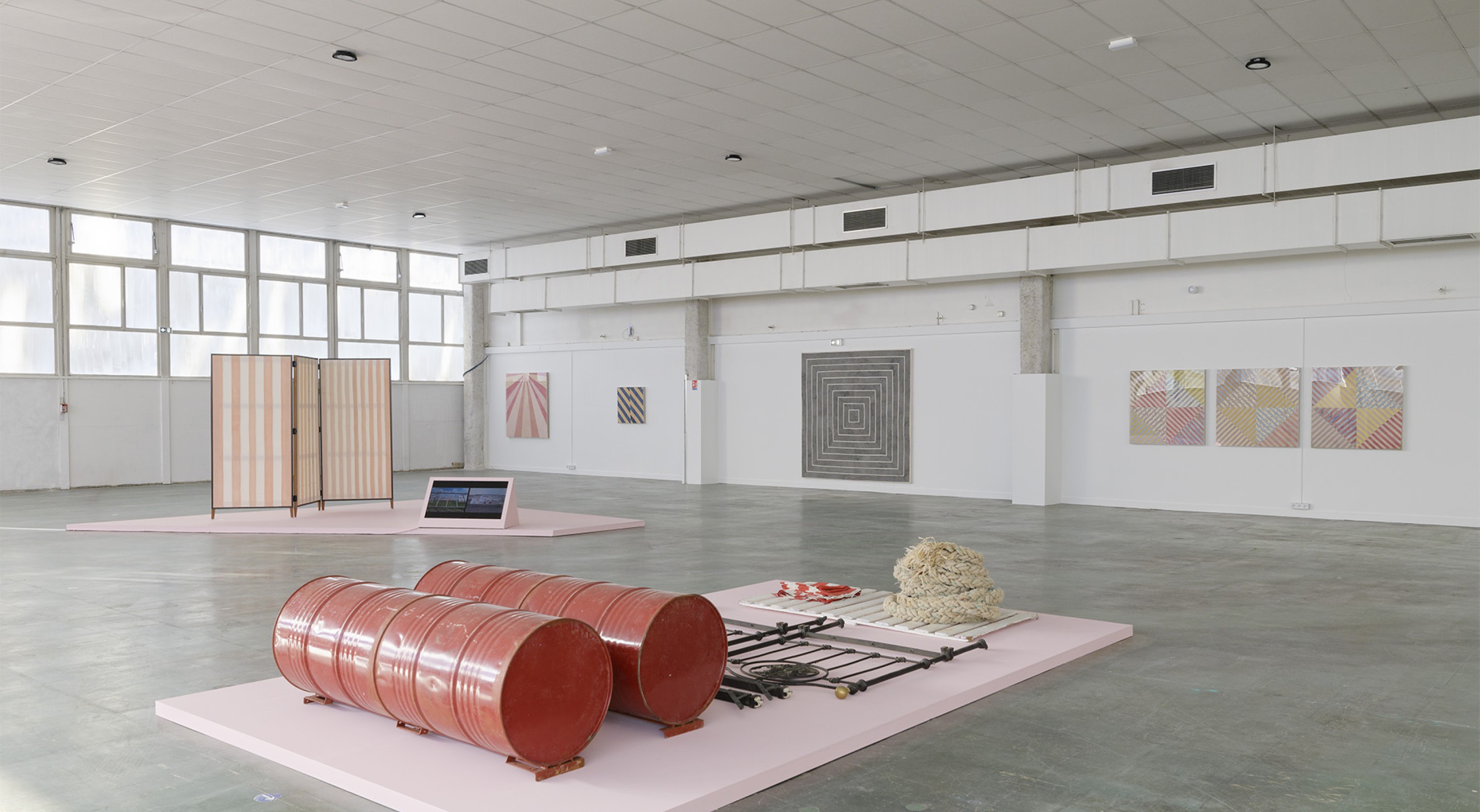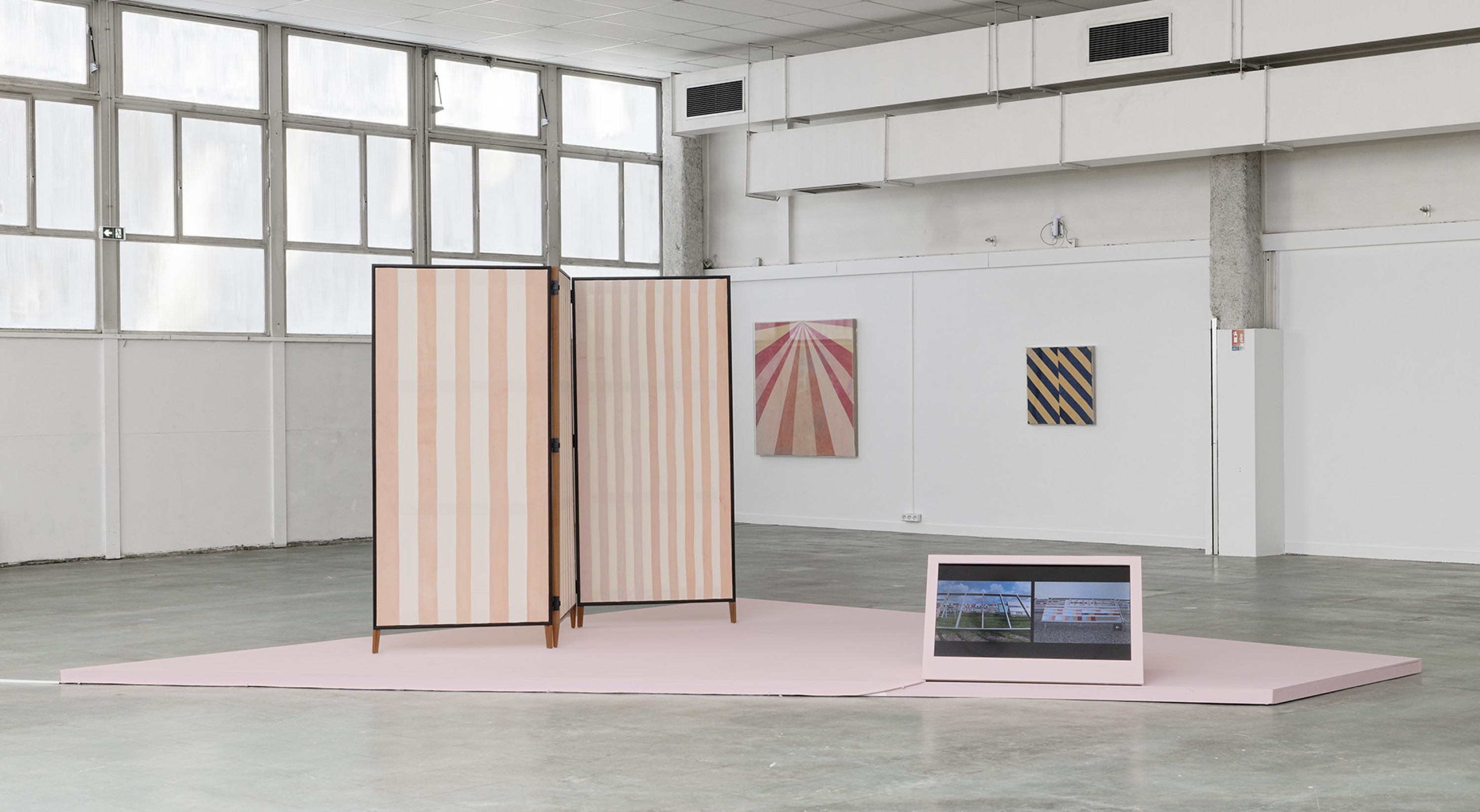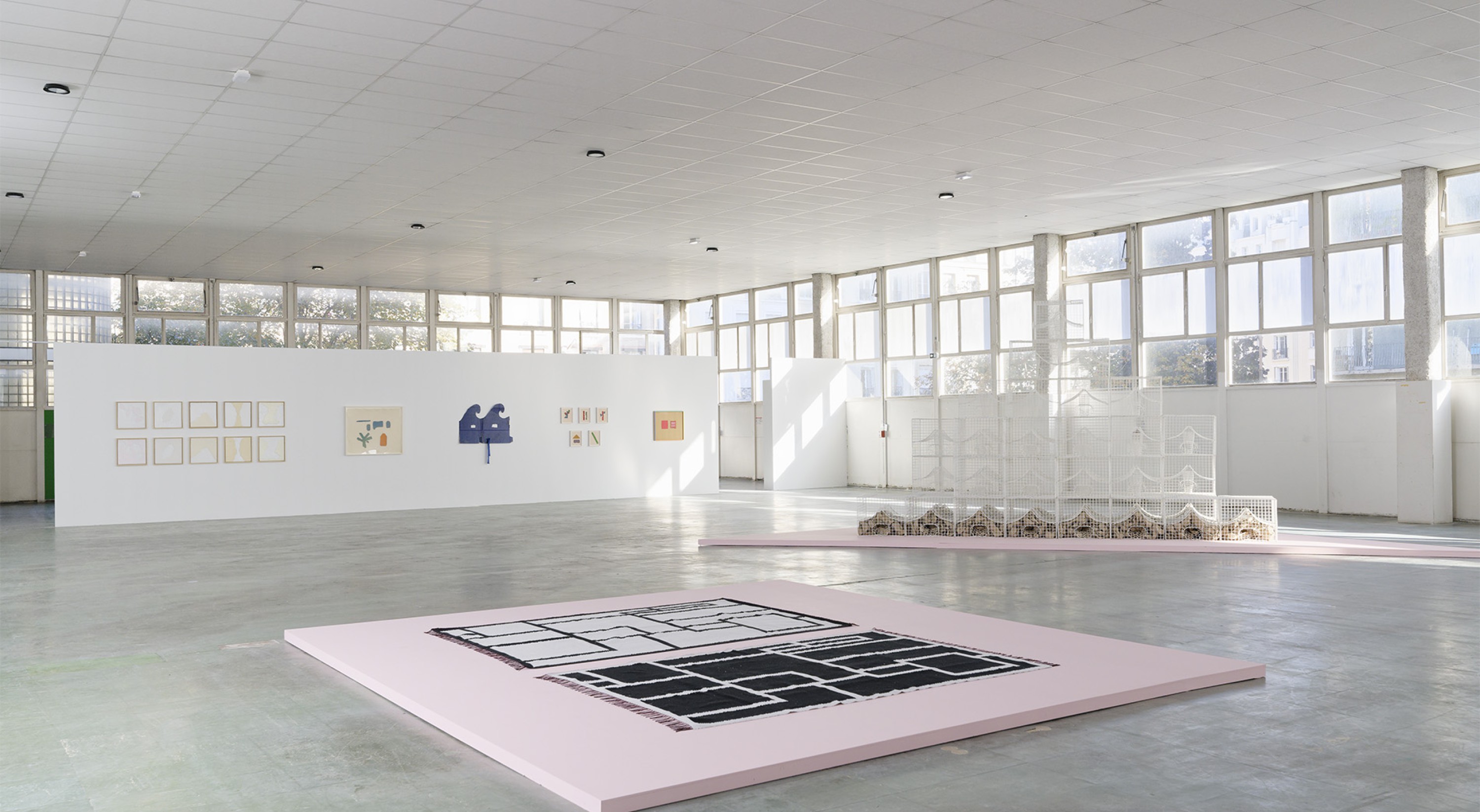Yto Barrada
Solidité lumière
octoberoct 15 - november – nov 15
Curated by Clément Dirié
The Festival d'Automne à Paris produces these exhibition, in collaboration with Césure
With the support of PACE Gallery; Galerie Polaris, Paris; and Sfeir-Semler Gallery, Beirut & Hamburg
With the support of Sylvie Winckler and Fonds Meyer Louis-Dreyfus
Designed specifically for the large Césure plateau, the site of the former Paris-3 university library, the Solidité lumière exhibition offers an open landscape bringing together recent works and new productions by Yto Barrada. Among other things, it looks at revisiting modernism, the art of rafts and drifting, establishing rules or breaking them, testing the resistance of colours (their 'light solidity') and studying the metamorphoses of flowers.
At the centre of the space, to be explored like a playground, an evocative group of sculptural works - a cast of a dinosaur skeleton discovered in Morocco, a bed from Tangiers, a pink screen with bayadère stripes, shellfish trays assembled in a way inspired by the artist's stay on Tangier Island (Virginia, USA), and carpets that have become emotional diagrams - explore and dramatise the notions of creation, transmission and our multiple relationships with time.
Nearby, the film A Day Is A Day (2022) sheds light on the meaning of the exhibition's title. It 'documents' the highly technical and slightly surreal activities of two companies, based in Miami and Phoenix, which specialise in measuring the resistance of colours and textiles to sunlight and climate. On the glass roof of the space, a similar gesture is made with natural and tinted Meudon white. Colour and light as instruments for measuring time. Part of the "After Stella" series launched in 2018, and based in particular on dyes developed at The Mothership (Tangiers), a group of textile works revisits the history of modernism by combining motifs inspired by the geometric paintings produced by the American artist Frank Stella (*1936) in the 1960s - some of whose titles bear the names of Moroccan towns - with a production process based on skills and techniques (sewing, dyeing) long marginalised and excluded from the modernist canon. Colour and pigment as tools for rewriting history.
Finally, the last group brings together photographs, collages, sculptures and posters to propose new formal, chromatic, educational and linguistic grammars. Samples and alphabet books, word and material games, sketches and Fröbel-style exercises, directories and jigsaw puzzles underline Yto Barrada's interest in material culture, taxonomy, collective production and learning processes, and pedagogy through experimentation.




